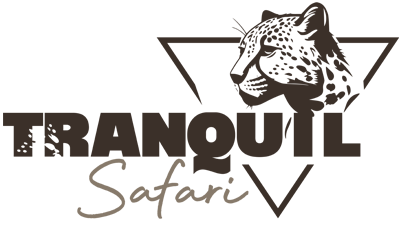Arusha is the nearest major town to Arusha National Park, which is situated in the Arusha Region of northern Tanzania, at the base of Mount Meru, which serves as a dramatic backdrop to the park’s diverse landscapes. Spanning approximately 137 square kilometres (53 square miles), it encompasses a mix of montane forests, acacia woodlands, alkaline lakes (such as Momella Lakes), and the prominent Ngurdoto Crater—a collapsed volcanic caldera often called “Little Ngorongoro.” The park lies just 25 kilometres (15 miles) east of Arusha town, the bustling gateway city to Tanzania’s northern safari circuit, making it one of the most accessible protected areas in the country. It is positioned roughly 58 kilometres (36 miles) from Moshi and about 35 kilometres (22 miles) from Kilimanjaro International Airport (JRO), placing it at coordinates approximately 3°10’S latitude and 36°50’E longitude. This strategic location allows it to act as a convenient “warm-up” destination for travellers heading to larger parks like Serengeti or Ngorongoro Crater. The park’s proximity to Arusha town—often described as a 40-minute drive—highlights its role in the East African Rift Valley ecosystem, where it protects unique biodiversity, including black-and-white colobus monkeys, giraffes, and over 400 bird species. Established in 1960 as a merger of earlier reserves dating back to 1916, it is managed by the Tanzania National Parks Authority (TANAPA) and attracts around 70,000 visitors annually for its canoeing on the lakes, walking safaris, and climbing opportunities on Mount Meru.
How to Get to Arusha National Park
Accessing Arusha National Park is straightforward due to its central location in northern Tanzania, with options catering to budget travellers, luxury seekers, and those on tight schedules. The park has three main entry gates: the Momella Gate (primary for most visitors), Ngurdoto Gate (for crater access), and the less-used Lemeka Gate. Entry fees are approximately USD 45-60 per adult per day (depending on nationality), payable at the gates or via TANAPA’s online portal.
By Road
- From Arusha Town: The most common route is a paved road (B144) from Arusha to the Momella Gate, covering 25-30 km in about 40 minutes by car. Taxis, shared minibuses (dala-dalas), or private transfers cost USD 20-50 one-way. Day trips from Arusha are popular, often including guided game drives.
- From Kilimanjaro International Airport (JRO): Drive via the A104 highway, a 50-60 km journey taking 1-1.5 hours (USD 40-60 by taxi). Avoid peak hours to dodge traffic near Arusha.
- From Nairobi (Kenya): Cross the Namanga border on the A104/A2, a 250-270 km drive taking 4-6 hours (USD 100-150 by shuttle or private vehicle). Immigration formalities add 30-60 minutes.
- From Dar es Salaam: The longest road option, via Dodoma on the A104 (550-650 km, 9-11 hours; USD 150-250). Not recommended for short trips due to fatigue.
- Public Transport: Public mini vans from Arusha, also known as Dala Dalas, drop near the gate; combine with a boda-boda motorcycle taxi for the final leg (total cost USD 5-10).
Road conditions are generally good on main highways, but 4×4 vehicles are advised for rainy seasons (March-May, November-December) due to occasional mud on park tracks.
By Air
Fly into Arusha Airport (ARK), then transfer by road (20-30 minutes, USD 20-40). Direct flights connect from major hubs (see distances below). For ultra-luxury, charter flights land at smaller airstrips, but Arusha NP lacks an in-park airstrip—visitors drive from nearby fields.
Tips for Travel
- Best time: Dry seasons (June-October, January-February) for clear views.
- Visas: East African Tourist Visa (USD 100) covers Tanzania and Kenya.
- Sustainability: Use eco-friendly operators to minimize impact on the fragile ecosystem.
Airstrips Serving Arusha National Park
Arusha National Park itself does not have a dedicated airstrip within its boundaries, unlike larger reserves such as Serengeti (with Seronera) or Lake Manyara (with its own airport). Instead, it relies on regional facilities for light aircraft and charters, facilitating quick access for fly-in safaris. The primary airstrip is:
- Arusha Airport (ARK, ICAO: HTAR): Located 10 km southwest of Arusha town (about 20-30 minutes’ drive to the park gates). This small but well-equipped airport handles domestic flights from Dar es Salaam, Zanzibar, Serengeti, and international connections via JRO. It supports scheduled flights by Air Excel and Coastal Aviation, plus charters for bush planes. Runway: 1,800m asphalt. Annual passengers: ~50,000.
- Kilimanjaro International Airport (JRO): 50 km east, the main international gateway with car transfers.
These airstrips enable seamless multi-park itineraries, with flights from Arusha ARK to Serengeti taking 1-2 hours.
Distances from Major Airports and Cities
Distances are approximate, based on straight-line (aerial) and road routes to the park’s main Momella Gate. Aerial distances suit flight planning, while road estimates include typical driving times (assuming good conditions). Zanzibar and Dar es Salaam queries reference their airports (ZNZ and DAR/Julius Nyerere). Dodoma refers to Dodoma Airport (TMA).
|
Origin
|
Airport Code
|
Aerial Distance
|
Road Distance
|
Driving Time
|
Notes
|
|---|---|---|---|---|---|
|
Kilimanjaro International Airport
|
JRO
|
50-68 km (31-42 mi)
|
50-60 km (31-37 mi)
|
1-1.5 hours
|
Direct taxis or shuttles; closest major hub.
|
|
Jomo Kenyatta International Airport (Nairobi)
|
NBO
|
253-264 km (157-164 mi)
|
265-272 km (165-169 mi)
|
4-6 hours
|
Border crossing at Namanga; flights take 45 min.
|
|
Dodoma Airport
|
TMA
|
326-336 km (203-209 mi)
|
411-415 km (255-258 mi)
|
5-7 hours
|
Via A104; limited direct flights (1.5 hours).
|
|
Julius Nyerere International Airport (Dar es Salaam)
|
DAR
|
481-513 km (299-319 mi)
|
550-635 km (342-395 mi)
|
9-11 hours
|
Flights ~1.5 hours; road via Dodoma.
|
|
Zanzibar International Airport
|
ZNZ
|
426-447 km (265-278 mi)
|
600-650 km (373-404 mi; via ferry/road)
|
10-12 hours (or 2-hour flight + transfer)
|
No direct road; fly via DAR or Arusha (1.5 hours total).
|
